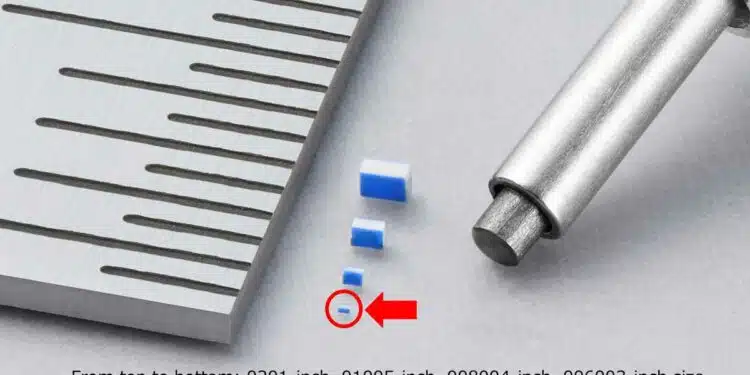Murata Manufacturing Co. Ltd announces the development of the world’s smallest class 006003-inch size (0.16 mm x 0.08 mm) SMD chip inductor.
This achievement represents a volume reduction of approximately 75% compared to the smallest 008004-inch size (0.25 mm × 0.125 mm) product.
The relentless pursuit of enhanced functionality and miniaturization in electronic mobile devices has led to a critical need for smaller, more efficient components. As a result, engineers are having to squeeze more components onto less board space.
The use of chip inductors, essential components used in a wide array of these electronic devices, has also increased, with some of the latest smartphones incorporating hundreds of them. This trend has intensified the demand for further miniaturization of chip inductors to facilitate high-density mounting where space is at a premium.
To address this demand, Murata has consistently led efforts to reduce chip sizes by integrating its proprietary core technologies. “Following our success in introducing the world’s smallest multilayer ceramic capacitor (MLCC) in September 2024, our engineering teams are now developing a pioneering 006003-inch size chip inductor to further meet market demands,” says Takaomi Toi, General Manager of Inductor Product Development Dept. at Murata Manufacturing Co Ltd.
“With the creation of the world’s smallest class prototype, we’re confident that this product represents an exciting addition to Murata’s extensive portfolio of market-leading chip inductors. This development continues to demonstrate Murata’s commitment to innovation and also marks a significant milestone in our quest to support the miniaturization and enhanced functionality of future electronic devices.”































